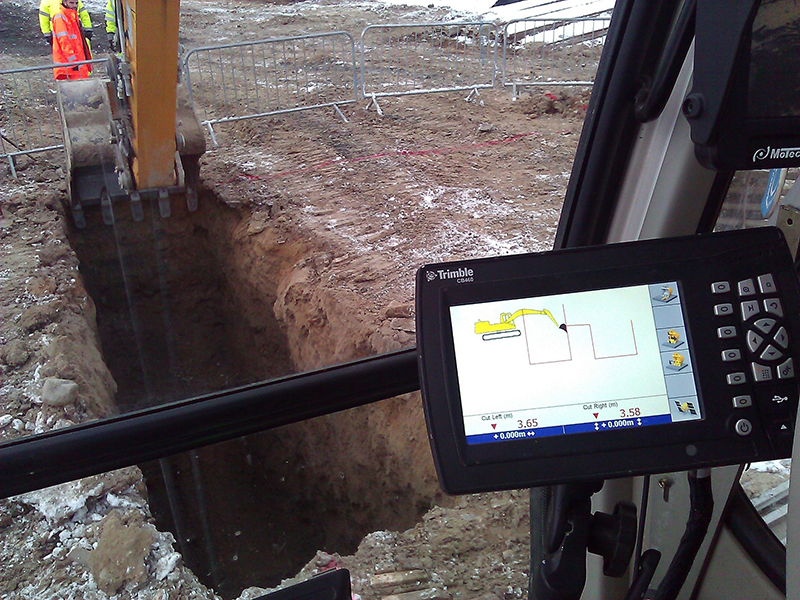
It is sometimes necessary to dig beyond the depth required for the formation of below-ground structures if the ground conditions are not stable. For example, this could be the case when working on vertical shafts and tunnels during the construction of subways and other underground passages. But what happens when it isn’t a pre-planned activity? Here Ian Barnes, Head of Business at SITECH, the UK & Ireland’s exclusive distributor of Trimble machine control technology, digs deeper into the problem.
In today’s climate, reducing costs and improving efficiency are key to ensuring profitability. While technology is sometimes seen as a cost burden, in reality it is a cost advantage, as it ensures operators only move what they need to.
To great depths
Excavating to greater depths than initially planned can be a hugely wasteful exercise in a construction project. Over (or under) digging means you will have to cut or fill to the required levels in order to meet design specifications and could mean you are moving materials unnecessarily. This leads to increased material costs, additional fuel, as well as resulting in wasted time and energy. To put this into perspective, I have seen projects where over digging by as little as one per cent than required adds ten per cent more material and ten per cent more time to the bottom line.
Extrapolate this across UK industry and it unveils another serious issue. The UK’s construction sector largely operates on a rental basis and the market is forecast to grow eleven per cent by 2023, according to AMA Research. The UK’s reliance on rental equipment means that delays caused by over digging can pile on costs for companies that lease equipment when contracts need to be extended. Instead of maximising the use of their rented excavators and dozers, over digging means that contractors are wasting time filling in areas that have already been dug.
Preventing the issue
Unplanned over digging is an issue of precision that usually stems from a lack of coordination between planners and contractors. Mistakes can occur when design changes in the field are not communicated with contractors properly, as it can become unclear for those operating excavators how much they should be digging and where.
Interestingly, according to a survey by KPMG, 69 per cent of construction projects in the UK are over budget by at least ten per cent — the survey lists poor communication as one of the reasons for this. With so many projects over budget, solving communication issues to help prevent over digging can have a huge effect on the bottom line of construction businesses, as well as on the wider industry.
The role of technology
Construction companies can improve site communication by equipping their fleet with machine control technology, global positioning systems (GPS) and site positioning software. For example, by using Earthworks hardware and software on excavators and dozers, contractors can wirelessly transfer data between the office and the site, so excavator operators have the latest designs at their fingertips. This helps operators stay on top of design changes and avoid digging in the wrong place or to the wrong depths.
Other machine control technology, such as Trimble SiteVision, uses augmented reality (AR) to project the design as a 3D image onto the proposed area. Using AR technology means contractors can easily see how the design is intended to fit with the surrounding areas, and gain clarity on where work should be undertaken.
Using unmanned aerial vehicles (UAVs) can also help companies to gather accurate digging information and easily share it between office staff and contractors. Drones can be incorporated into the traditional survey process to gather high-resolution geospatial images and survey-grade data that can be useful for both planners and contractors.
Reducing over digging could have a huge impact on the bottom line of your business — and, by incorporating some machine control technology, it is an easy fix. Where we have supported major rental partners, contractors and projects with technology, it has enabled an overall saving of time, materials and most importantly cost. If you don’t want your project to be part of the 69 per cent that are at least ten per cent over budget, it might be time to take the leap of faith and try machine control.








